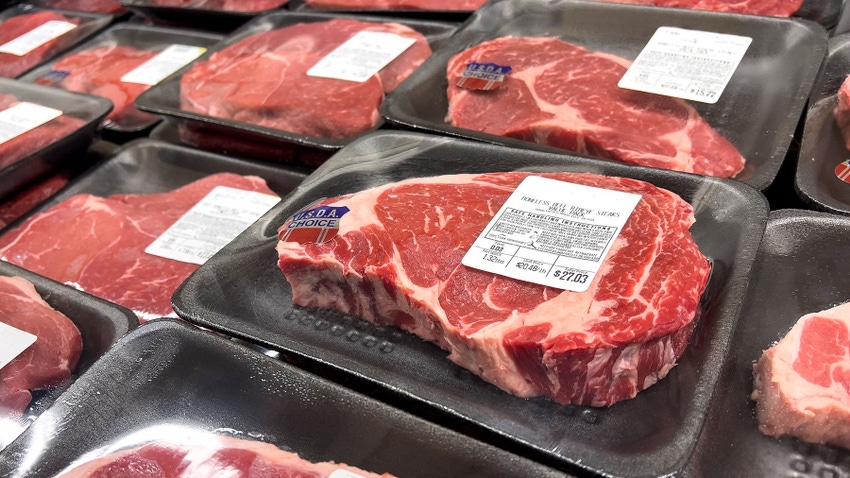
The U.S. Department of Agriculture released a proposed rule outlining new requirements that better align the voluntary “Product of USA” label with consumers’ interpretation of the claim.
The proposed rule allows the voluntary “Product of USA” or “Made in the USA” label claim to be used on meat, poultry and egg products only when they are derived from animals born, raised, slaughtered and processed in the U.S.
USDA says the increased clarity and transparency provided by this change would prevent consumer confusion and help ensure that consumers understand where their food comes from.
“American consumers expect that when they buy a meat product at the grocery store, the claims they see on the label mean what they say,” says Agriculture Secretary Tom Vilsack. “These proposed changes are intended to provide consumers with accurate information to make informed purchasing decisions.”
Background
Under current regulations, imported beef can be brought into the U.S., undergo a "significant transformation," which can be as insignificant as trimming or rewrapping, and then claim the "Product of the U.S.A." label.
Numerous cattle industry groups filed petitions to make the legal case for the USDA to stop allowing imported meat to use a “Product of U.S.A.” label. In July 2021, USDA initiated a comprehensive review to understand what the “Product of USA” claim means to consumers and define the requirements for making the claim.
As part of its review, USDA commissioned a nationwide consumer survey. The survey revealed that the current “Product of USA” labeling claim is misleading to the majority of consumers surveyed, with a significant portion believing the claim means that the product was made from animals born, raised, slaughtered and processed in the U.S.
USDA’s comprehensive review shows there is a clear need to revise the current “Product of USA” label claim so that it more accurately conveys U.S. origin information.
‘Product of USA’ rule changes
Under the proposed rule, the label claim would continue to be voluntary. It would also remain eligible for generic label approval, meaning it would not need to be pre-approved by USDA’s Food Safety and Inspection Service before it could be used on regulated product, but would require supporting documentation to be on file for agency inspection personnel to verify.
The rulemaking also proposes to allow other voluntary U.S. origin claims on meat, poultry and egg products sold in the marketplace. These claims would need to include a description on the package of all preparation and processing steps that occurred in the United States upon which the claim is made.
Cattle groups respond to USDA action
The U.S. Cattlemen’s Association thanks the Biden Administration for finally closing the loophole that allows meat from other countries to be labeled “Product of the USA.” The group plans to submit comments supporting this proposed definition.
“If it says ‘Made in the USA,’ then it should be from cattle that have only known USA soil,” says USCA president Justin Tupper. “Consumers have the right to know where their food comes from, full stop.”
“Truthful labels protect consumers and keep the playing field fair,” says Joe Maxwell, president and co-founder of Farm Action. “After a five-year fight, we’re pleased to see the USDA stepping up to stop the cheaters picking the pockets of America’s farmers and ranchers.”
However, the National Cattlemen’s Beef Association says more needs to be done to protect U.S. cattle producers.
"Simply adding born, raised, and harvested requirements to an already broken label will fail to deliver additional value to cattle producers and it will undercut true voluntary, market-driven labels that benefit cattle producers,” says Kent Bacus, NCBA executive director of government affairs. “We cannot afford to replace one flawed government label with another flawed government label."
“We will continue working to find a voluntary, trade-compliant solution that promotes product differentiation and delivers profitable solutions and for U.S. cattle producers,” Bacus adds.
USDA’s proposed rulemaking is supported by petitions, thousands of comments from stakeholders, and data. USDA encourages stakeholders to comment on the proposed rule, which will be open for public comment for 60 days after publishing in the Federal Register.
About the Author(s)
You May Also Like






